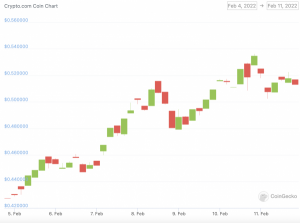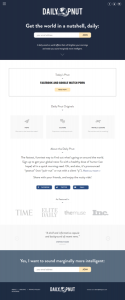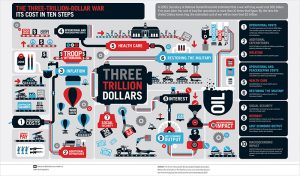Ah yes, the dreaded follow up email. We all hate to send them, but, at the end of the day, we all know how impactful that extra nudge can be when you’re working on a project, a sale, or even a job application. So what’s the issue we have with sending them? Perhaps it’s our fear of pestering people, or their rejecting us, or maybe we just don’t know what to say. The average person sends and receives at least 120 emails a day; so, there’s a chance your initial email just got lost in the shuffle and the recipient is busy, don’t assume they’re rejecting or ignoring you.

No matter what the problem is with sending that follow up email, it’s proven that it make all the difference when you’re looking for that key response from a contact. Before you send 10 pestering emails only to annoy everyone past the point of ever responding to you, we’ve got some great tricks to creating the best template for following up for any circumstance you may find yourself in.
Start receiving responses today:
Timing
Haven’t you ever heard the saying ‘timing is everything’? Well in the case of follow-up emails, it’s certainly true. It’s always best to keep in mind how you would likely respond to an email when you got one and the factors that may affect that decision. Why send out a great follow-up email at the wrong time?
It’s been shown that how responsive we are to emails is largely impacted by the time of the day. Researchers at USC Viterbi School of Engineering found that email response behaviors followed our natural circadian rhythms and that the majority of people are more likely to respond during that day than at night, and far more likely to respond on a weekday over the weekend. Your best chances to get the response you’re looking for is by sending out an email first thing on a weekday morning. Studies have shown that you may even get a longer response than usual when your contact gets your email in the morning. But if you’re waiting longer than a day for a response, chances are, you won’t be hearing back at all.
So what does this tell us? Well for starters, you shouldn’t be sending out your follow-up email at midnight on a Saturday. If you’ve been waiting longer than a day for an initial response, then it’s time to send out your first follow-up while you can still remain fresh at the top of their mind.
Plan to send your emails out first thing in the morning. If this doesn’t fit into your schedule, adopt a CRM software or a program like Boomerang for Gmail that will help you schedule those emails to be sent to your contacts…even if you’re still sleeping.
Purpose
What’s your reason for sending a follow-up?
- Job inquiry
- Sales call
- Reference
- New client
- Influencer outreach
- Potential employee
Whatever it may be, stick to your purpose and keep it short and sweet. No really, don’t bog them down with too many details! If there’s too much of a subject change within the body of an email, it’s more likely that your recipient is going to lose interest…and may not even read the email in its entirety. Remember, you’re sending this email to show that you care and that you’re putting in the extra effort, don’t veer off course or distract them from your main purpose with extraneous details.
Thanks to the rise of technology and social media and the world of the 140 character tweet, the average human’s attention span is shrinking to about 8 seconds. Yes, you read that right, 8 seconds. Did you make it through this post without checking your phone or opening another tab? You may be proof of this statistic and it’s something important to keep in mind when you’re sending your email. The average office worker receives 121 emails a day and spends about 28% of their work week on emails. Your follow-up needs to stand out from that crowd and keep their attention, or you need to find a way to write an effective 8-second email!
Content
Okay, let’s get to the meat of it. No matter what your purpose is for sending a follow-up email, there are a few key points you need to keep in mind when you’re sending it out.
- Start with the subject line. Without an effective subject, your contact won’t even open up your email. Make it actionable, enticing and to the point. The best subject lines are less than 50 characters long. Avoid making it gimmicky and definitely avoid all the extra punctuation!!! Instead, be concise and make your intention clear. Our CEO, Zvi, recommends the short and sweet subject line ‘Touching Base’ when you’re following up.
- Keep it polite. This is huge! Generally, when you’re following up with someone it’s because you’re looking for something from them. Don’t get accusatory or rude with your contact simply because they didn’t answer your initial email. Be humble and polite.
- Choose your words carefully. Avoid writing in the passive voice and using words that weaken your writing. Stay away from words like ‘really’ and ‘just.’ They’re vague and if you’re trying to convey emphasis, they tend to be overused. The same goes for ‘I believe/think’ this phrase immediately weakens your voice and shows a lack of confidence. Be confident in yourself and your abilities!
- There’s no need for you to mention ‘follow-up’ several times throughout the email. You can easily make it clear that you’re doing so without sounding like a broken record. We challenge you to send your email without even mentioning the words once! There’s nothing worse than getting an email from someone who reminds you every other sentence that you haven’t gotten back to them yet.
- Keep it brief and don’t follow up every single day. Be respectful of your contact’s time, get to the point and don’t hound them with a new email every morning when you wake up and check your inbox. In this case, the squeaky wheel methodology may not be the best option.
- Get creative. Chances are, that the reason you didn’t get an initial response is because your email got lost in the crowd of hundreds of other emails. But, there’s also a possibility that you need to do just a little more to get their attention…and here’s where your creativity comes into play. Know your audience and don’t do anything that could jeopardize a job possibility or a sales deal but there are small ways you can get creative without being crazy. Try out a different subject line, share a fun article that you think they may like, or even include a picture or gif that you think they might find amusing. The point here is to stand out from the crowd, don’t be afraid to take a chance.
Ready to send the best follow-up email? Download our template today.
Remember, no one wants to be annoying when it comes to sending emails but sending out a follow-up email doesn’t have to be annoying. Often, sending a follow-up email is the extra push or reminder that’s necessary to get the answer you need. Don’t be timid or afraid of sending out that message, instead choose to be polite, personable, funny and memorable, and watch as the responses start rolling in!
Digital & Social Articles on Business 2 Community(88)













